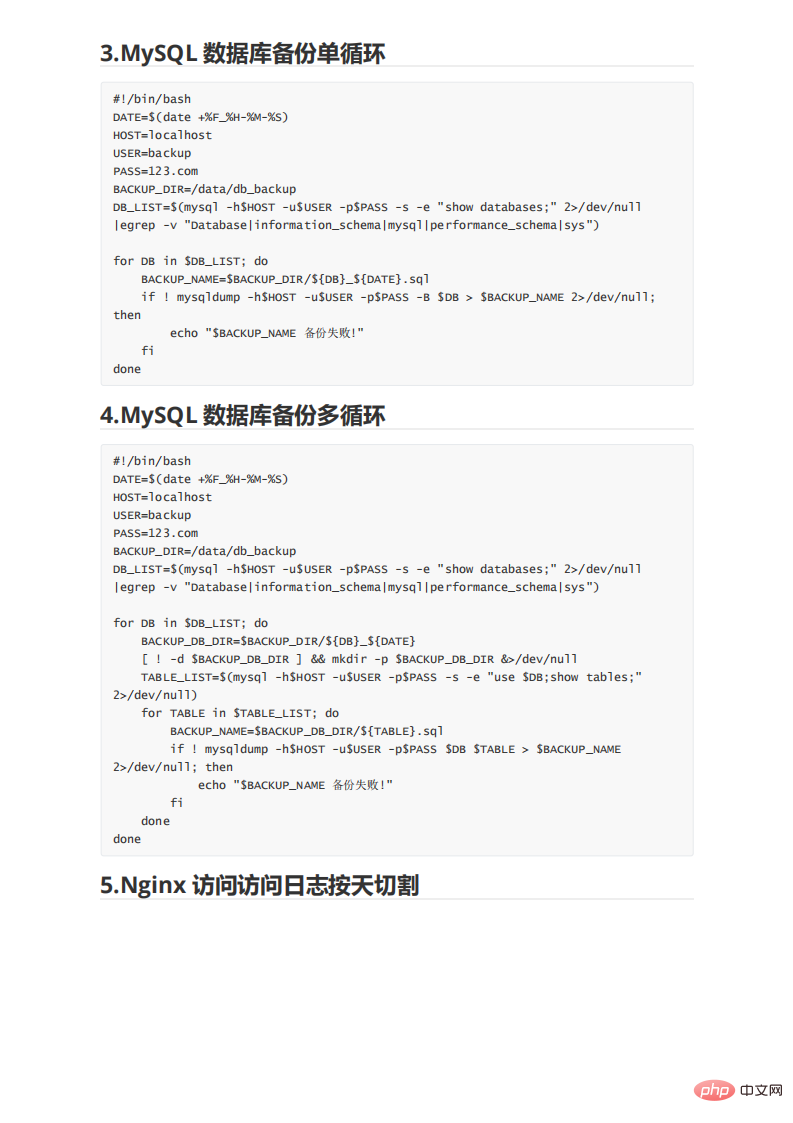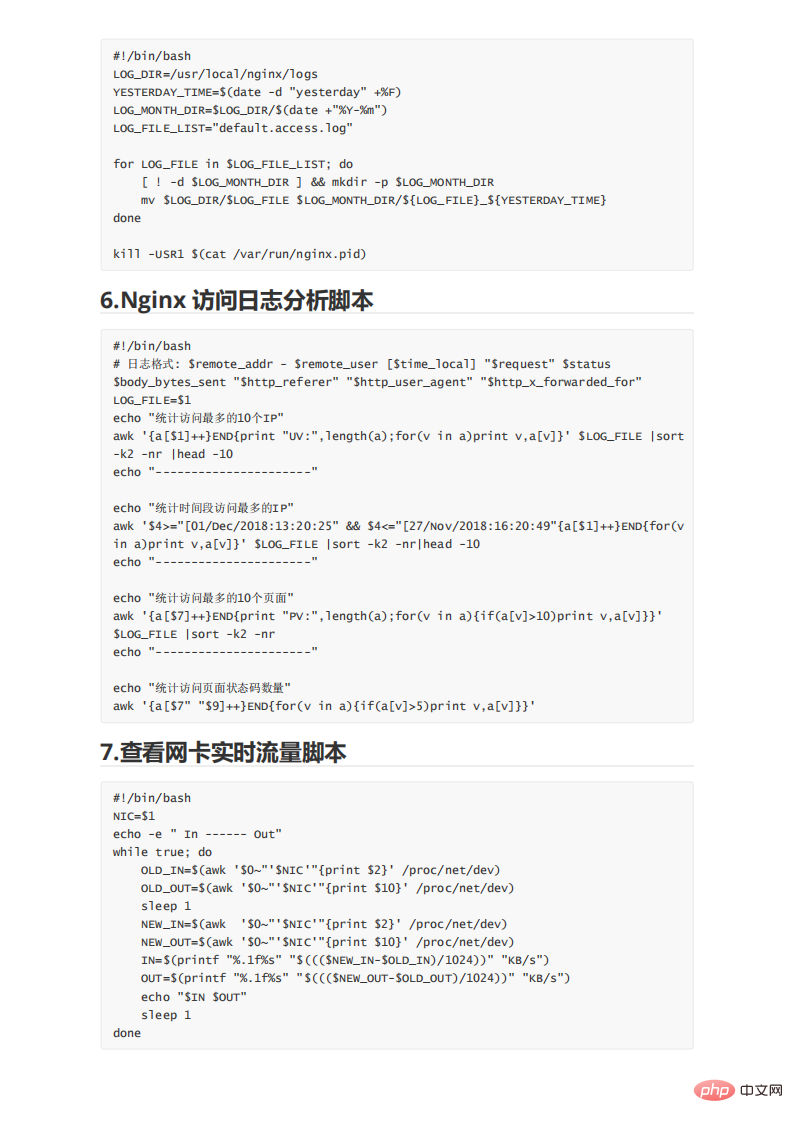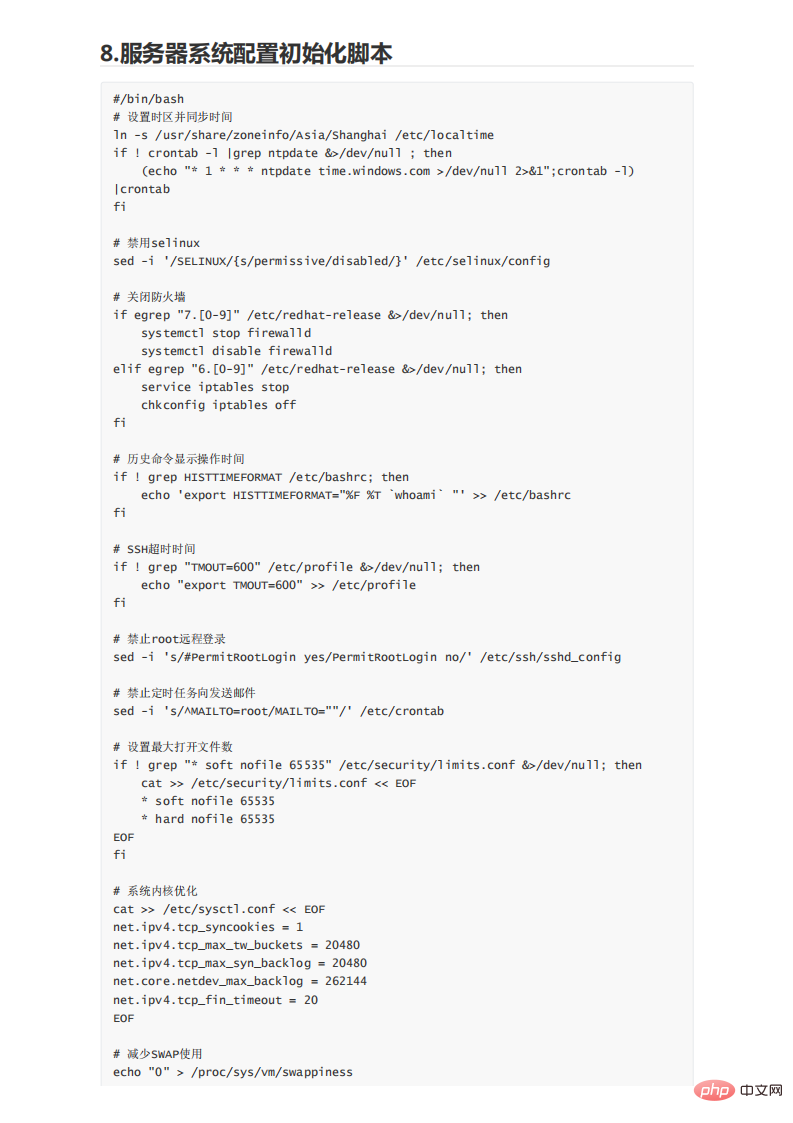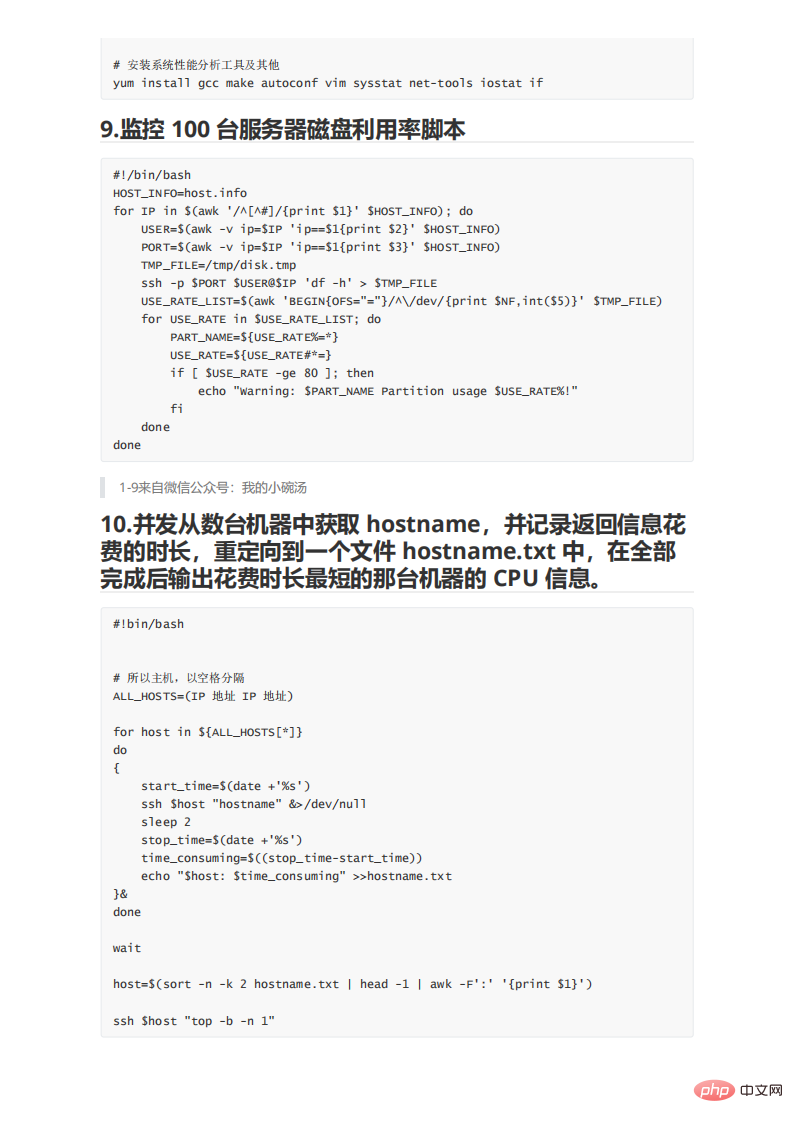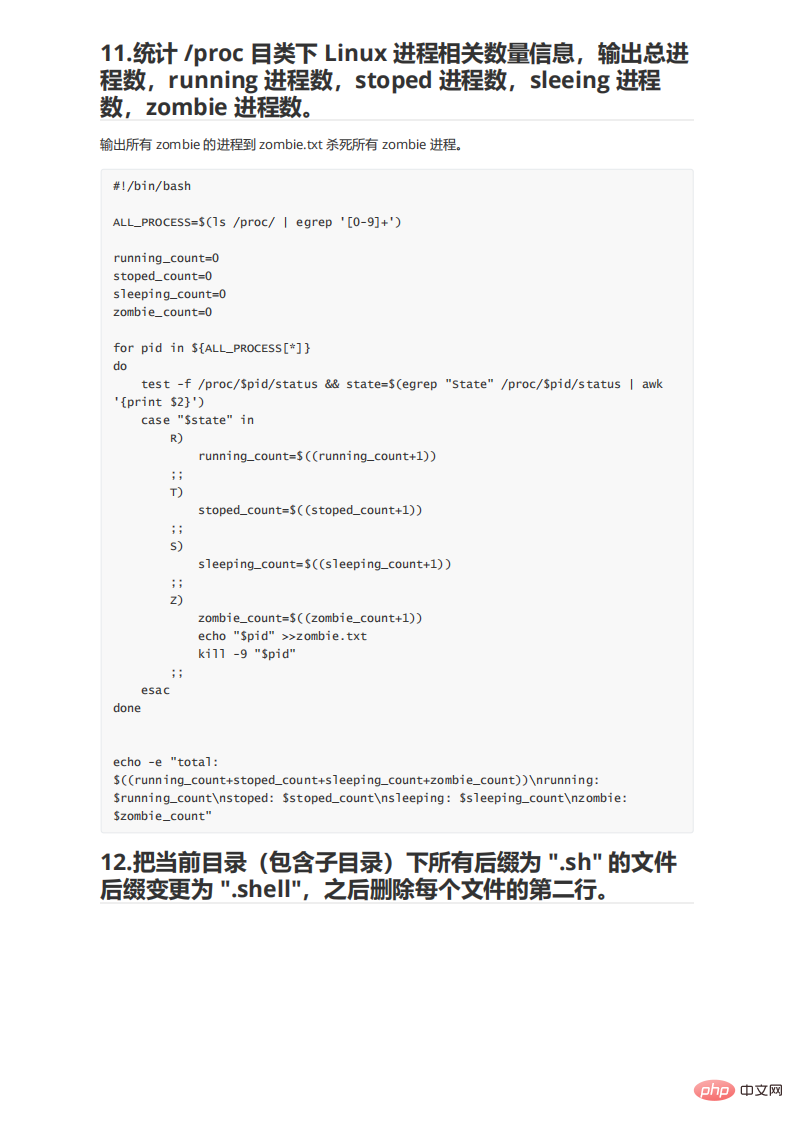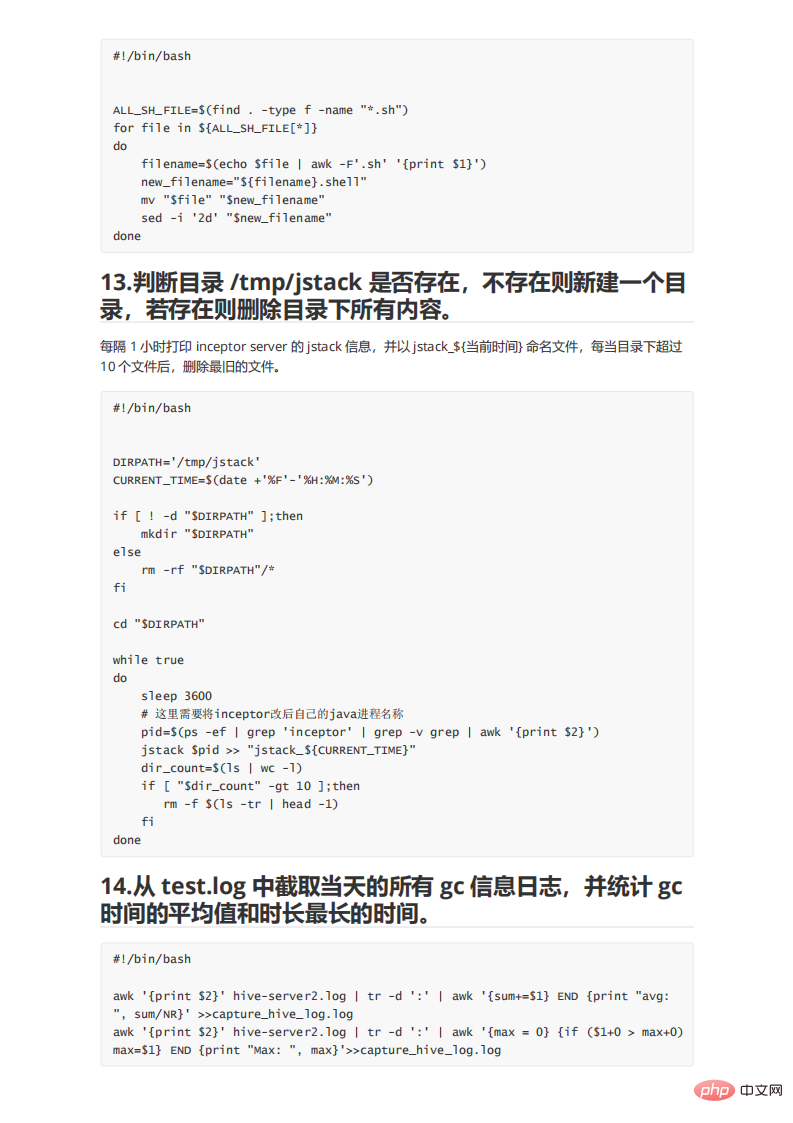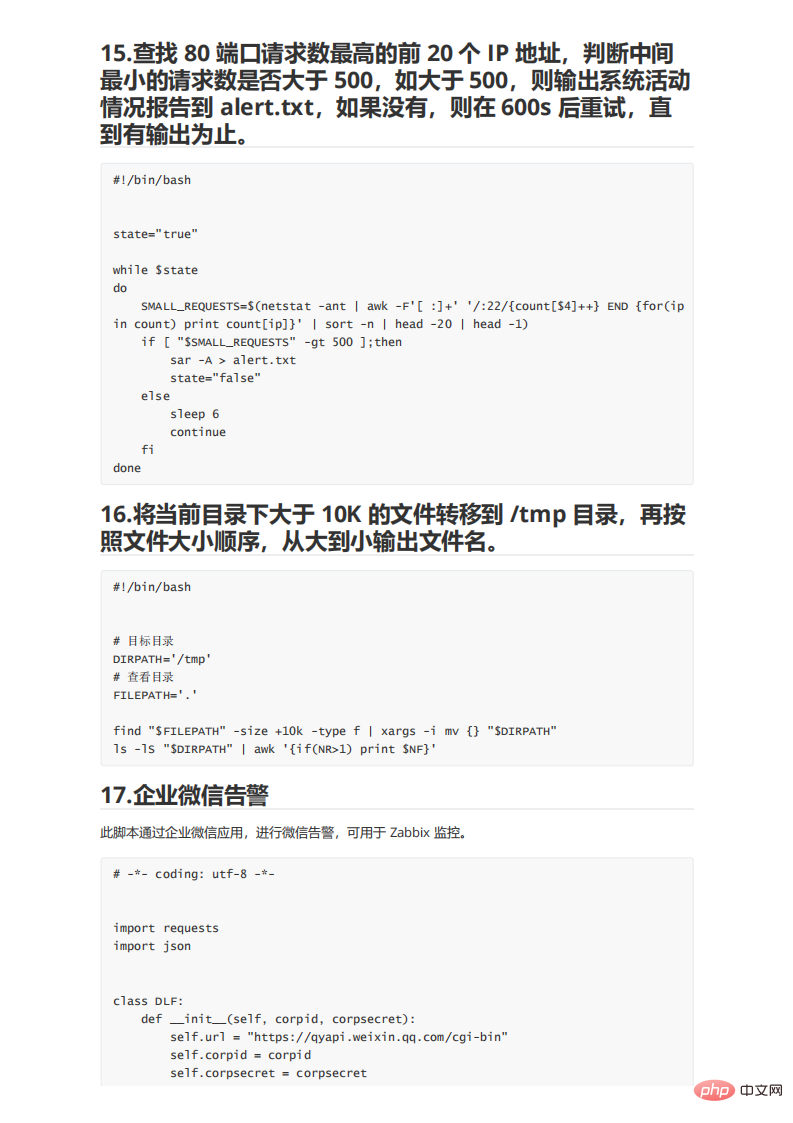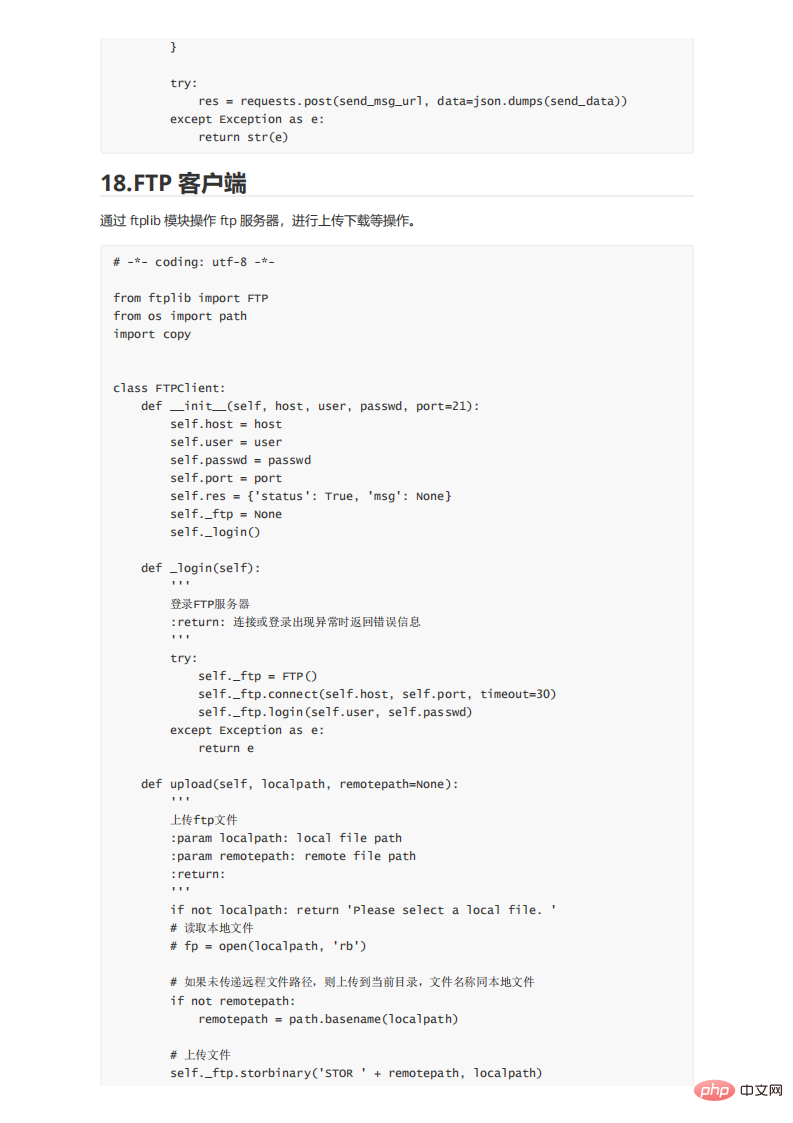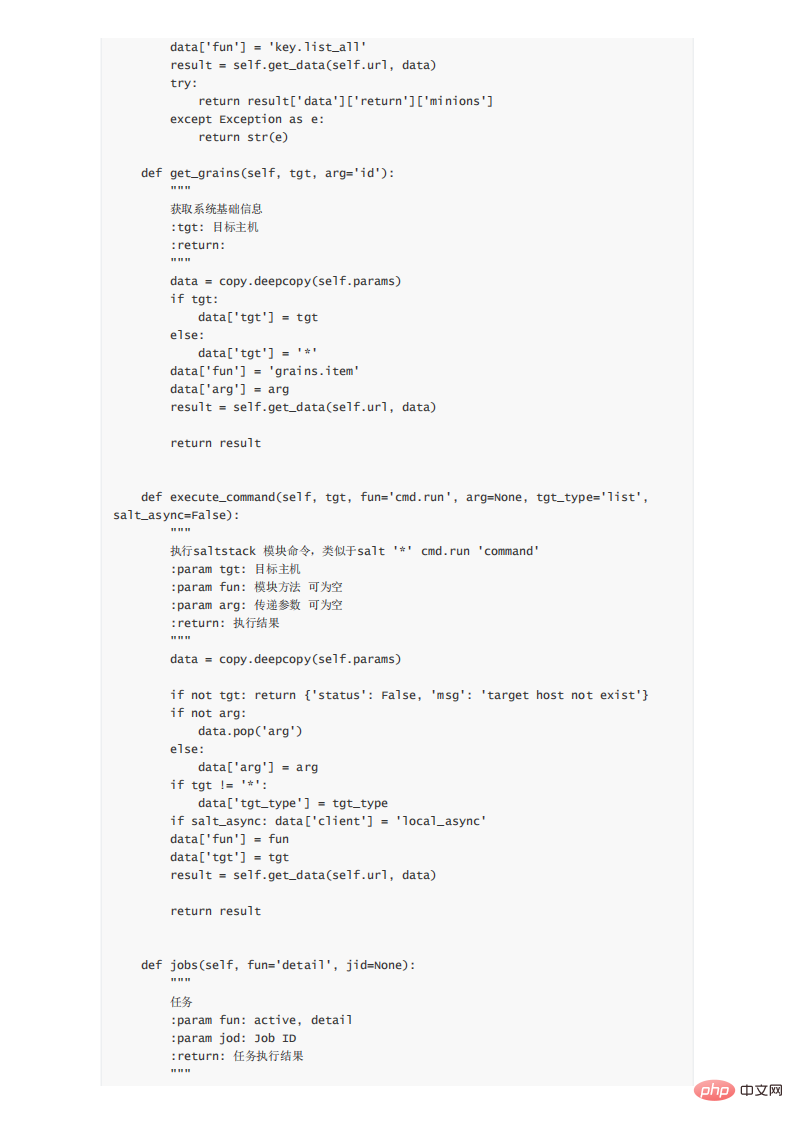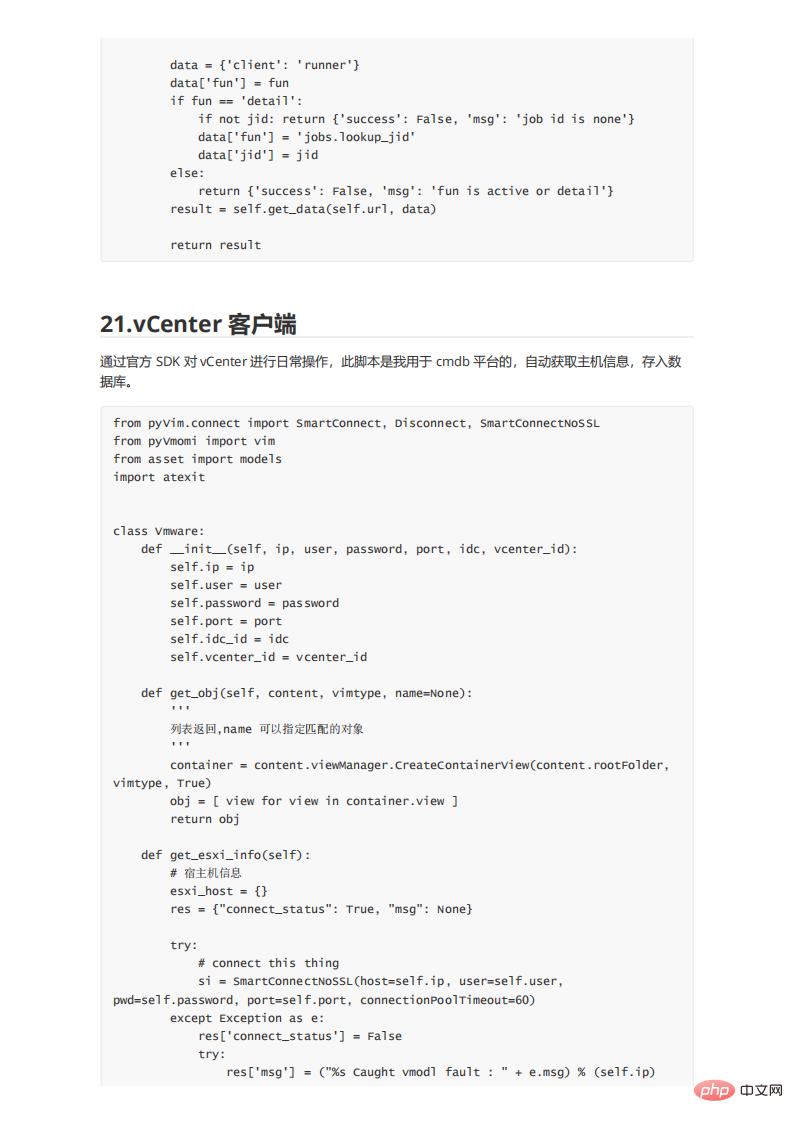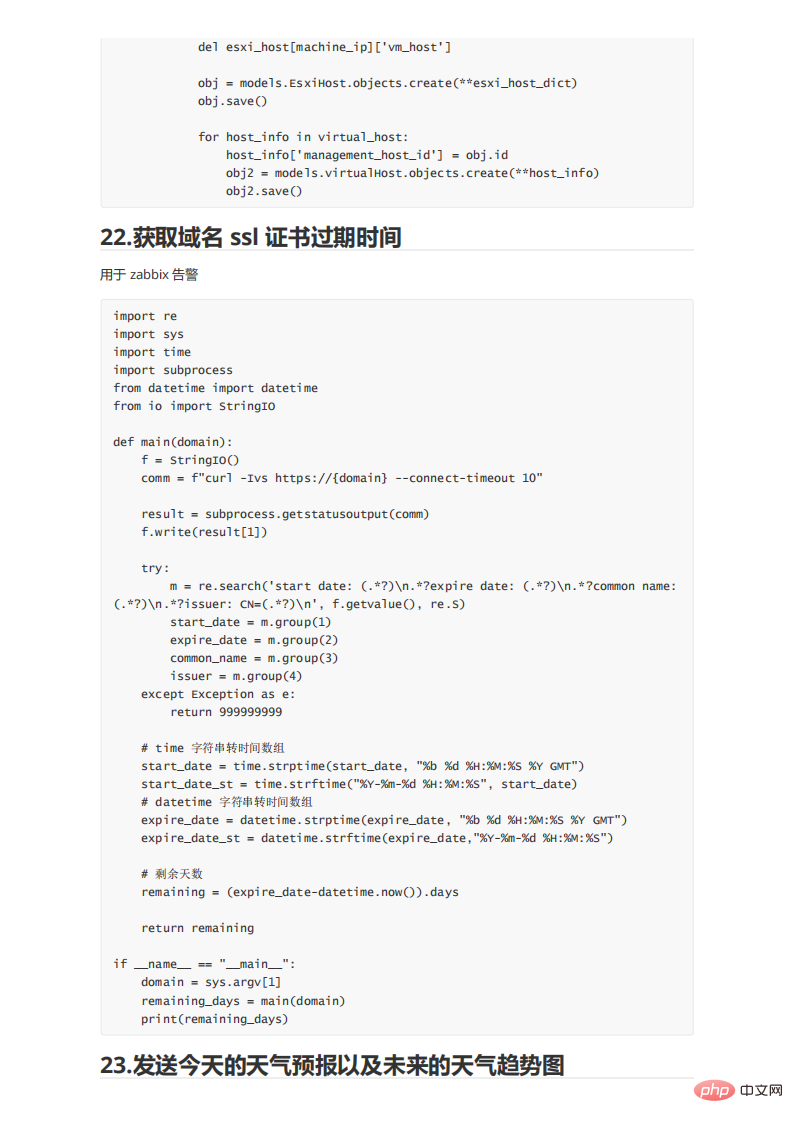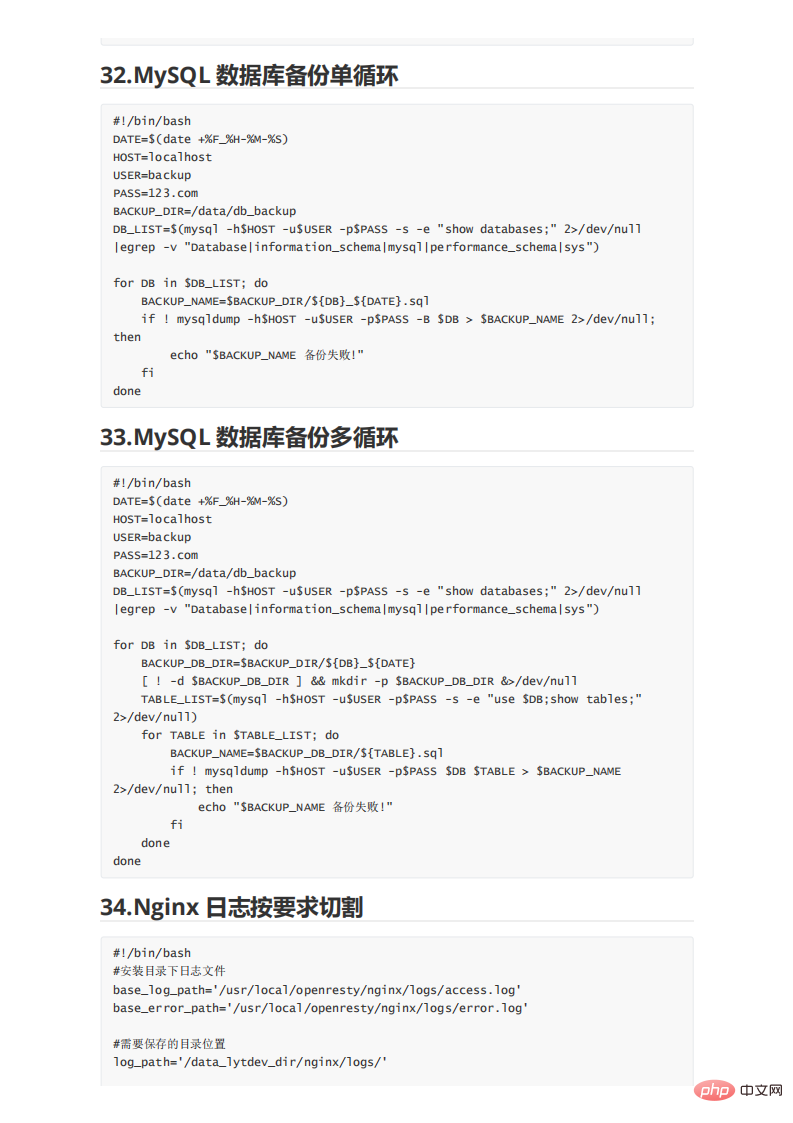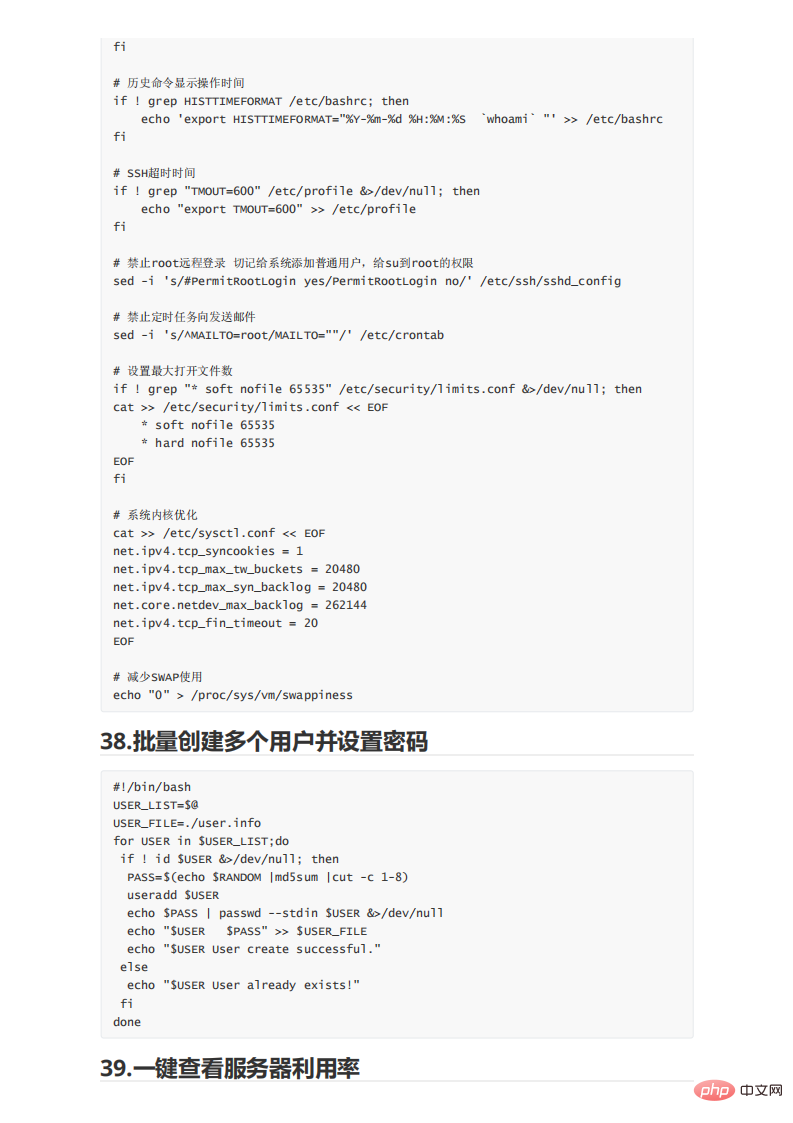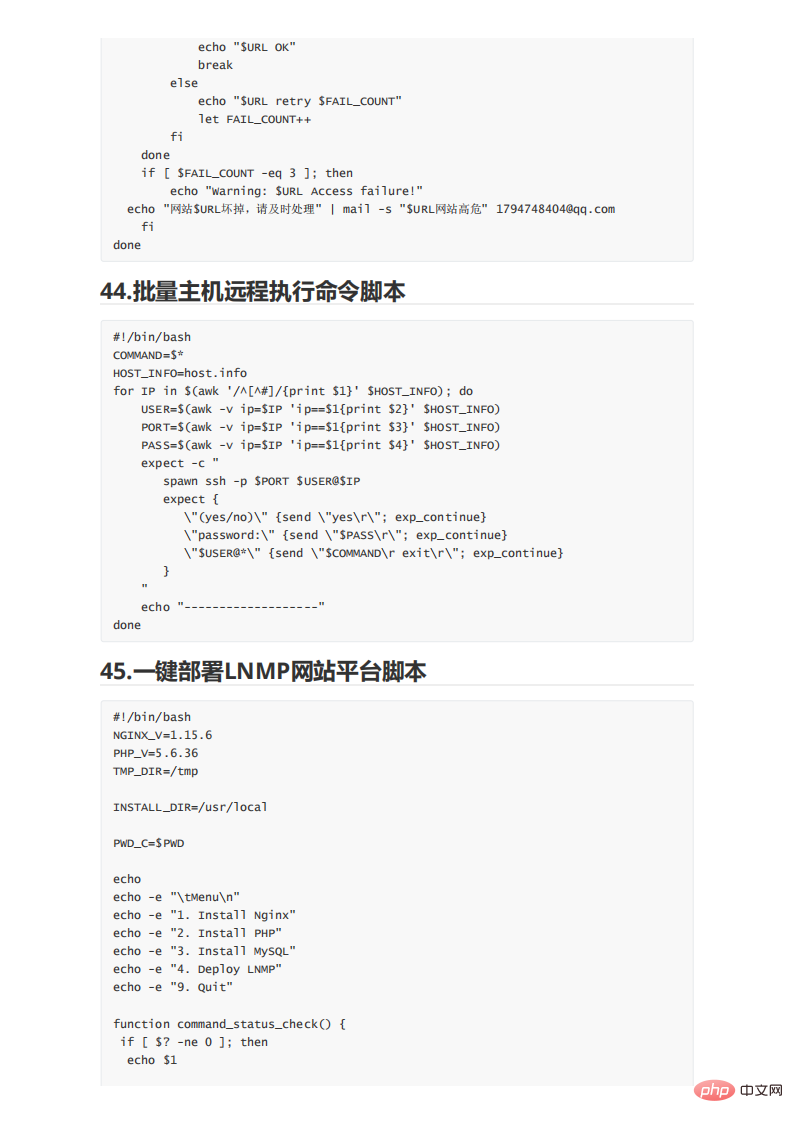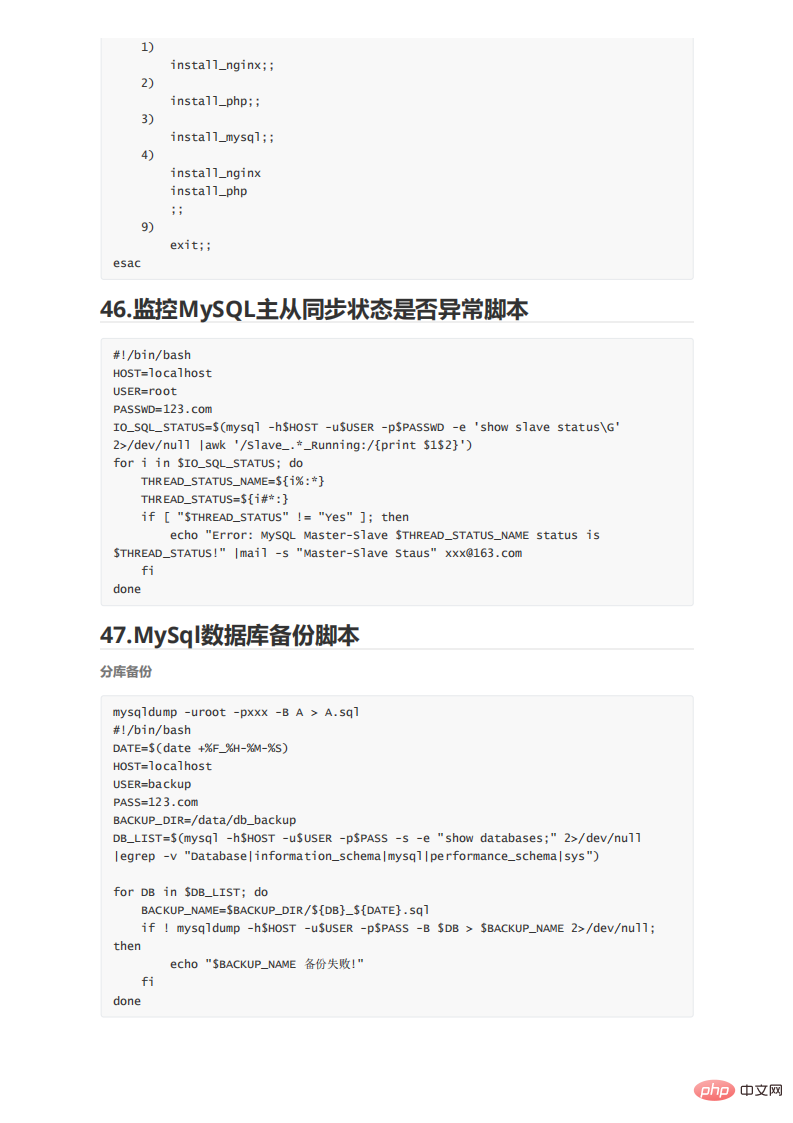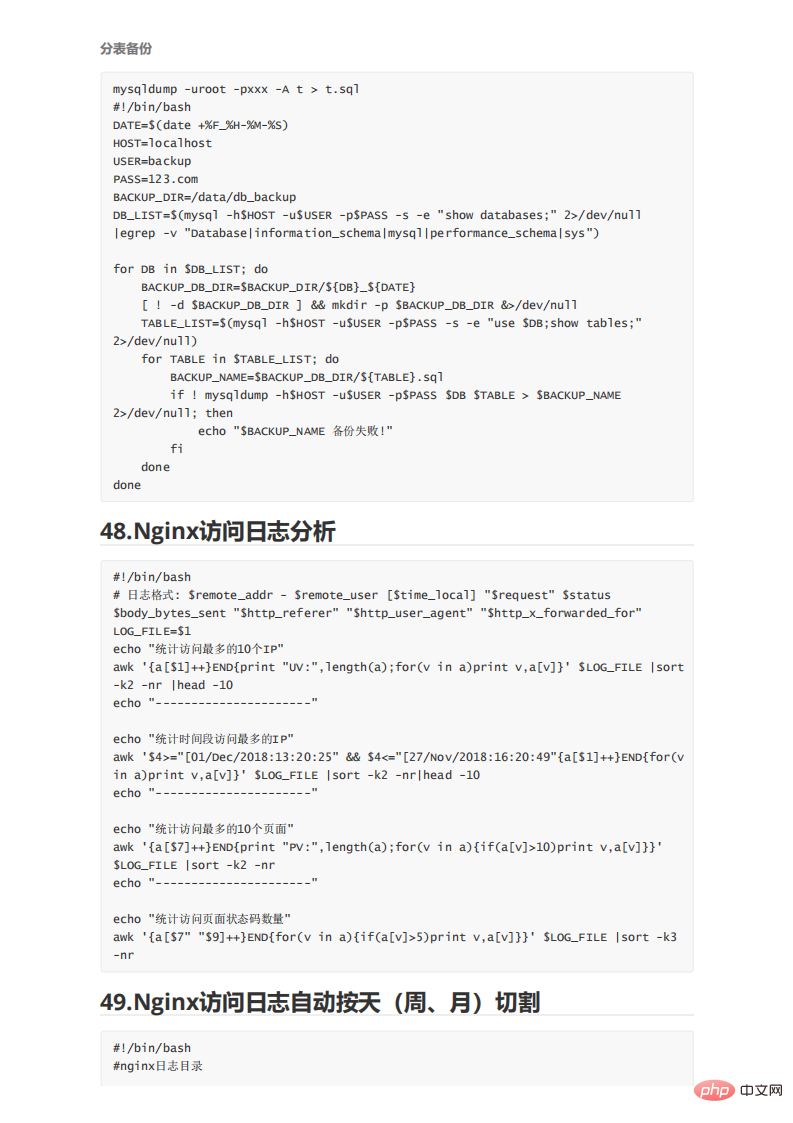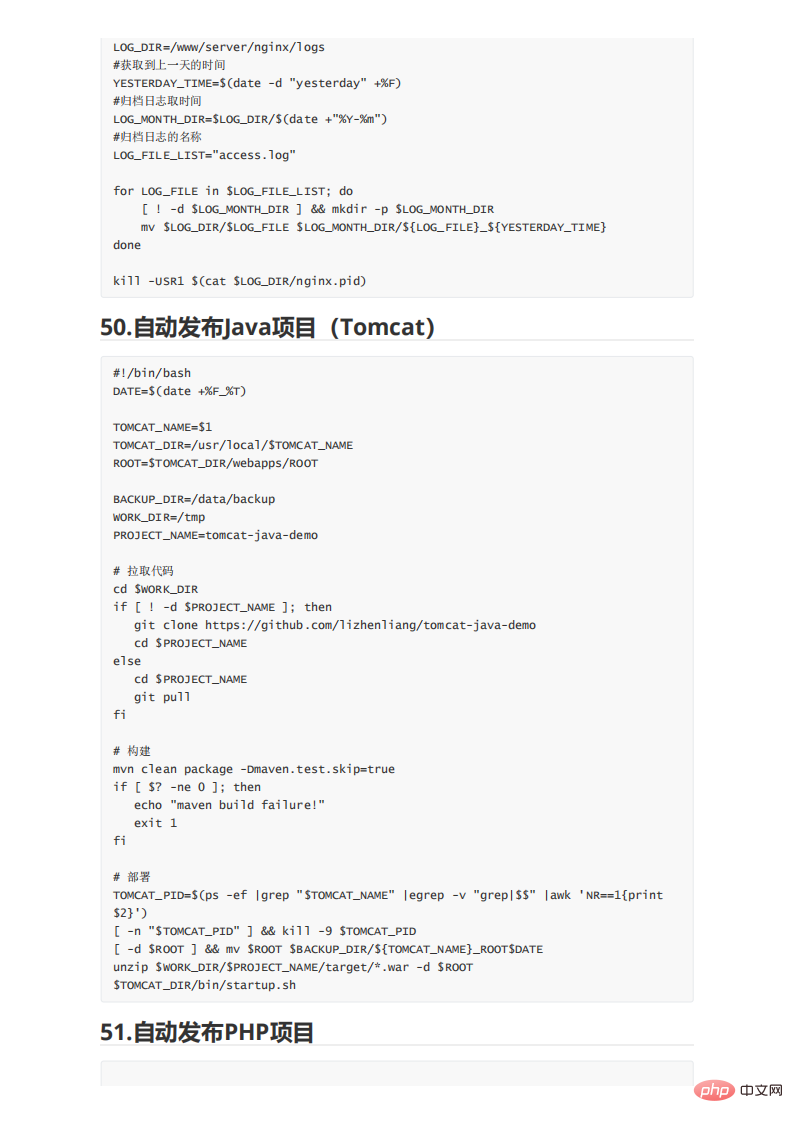 Operation and Maintenance
Operation and Maintenance
 Linux Operation and Maintenance
Linux Operation and Maintenance
 109 practical shell script examples, the code is clear and easy to use!
109 practical shell script examples, the code is clear and easy to use!
109 practical shell script examples, the code is clear and easy to use!
Shell script is to use the command interpretation function of Shell to parse a plain text file and then execute these functions. It can also be said that Shell script is a collection of a series of commands.
Shell can be used directly on win/Unix/Linux, and can call a large number of system internal functions to interpret and execute programs. If we are proficient in Shell scripts, we can operate the computer more easily. It’s easier and saves a lot of time.
This document compiles 109 shell scripts from the Internet. I hope it will be helpful to everyone. The code is clear and reproducible. The electronic version is conducive to everyone practicing at any time and improving practical capabilities. It is a masterpiece that integrates all the core knowledge points of Shell scripts. It is a perfect tool for learning, improving, and interviewing. The must-have products , I suggest you collect them and save them.
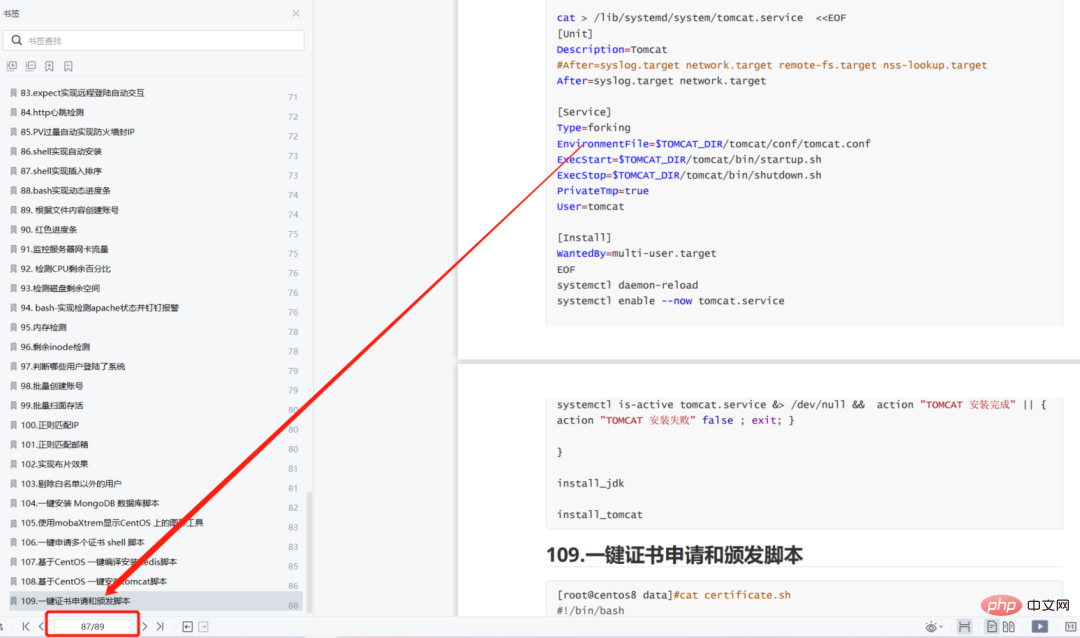
##1.Dos attack prevention (automatic blocking of attack IP)
2.Linux system sends alarm script
3.MySQL database backup single cycle
4.MySQL database backup multi-cycle
5.Nginx access log press Sky cutting
6.Nginx access log analysis script
7.View the network card in real time Traffic script
8. Server system configuration initialization script
9. Monitor 100 units Server disk utilization script
#10. Concurrently obtain hostname from several machines, record the time it takes to return information, and redirect to a file hostname.txt , after all is completed, the CPU information of the machine that takes the shortest time is output.
- #11 . Statistics on the number of Linux processes under the /proc category, output the total number of processes, the number of runninq processes, the number of stopped processes, the number of sleeping processes, and the number of zo mbie processes.
- 12. Change the suffix of all files with the suffix ".sh" in the current directory (including subdirectories) to ".shell", and then delete each The second line of the file.
- 13. Determine whether the directory /tmp/jstack exists. If it does not exist, create a new directory. If it exists, delete all contents in the directory.
- 14. Intercept all gc information logs of the day from test.loq, and count the average gc time and the longest time.
- 15. Find the top 20 IP addresses with the highest number of requests for port 80, and determine whether the smallest number of requests in the middle is greater than 500. If it is greater than 500, output the system The activity is reported to alert.txt. If not, try again after 600s until there is output.
- 16. Transfer files larger than 10K in the current directory to the /tmp directory, and then output the file names in order of file size from large to small.
- 17. Enterprise WeChat Alarm
- 18.FTP Client
- 19.SSH Client
- #21.vCenter Client
- 22. Get the domain name ssl certificate expiration time
- #23. Send today’s weather forecast and future weather Super potential graph
- 24.SVN full backup
- 25.zabbix monitoring user password Expired
- 26. Build local YUM
- 27. Back up current date file
- 28. DOS attack prevention (automatic blocking of attack IP)
- 29. How many batches are created? Create a user and set a password
- 30. Quickly set up a LAMP server and WordPress blog on Ubuntu 20.04
- ##31. Automatic backup of MySQL database every day
-
##34.Nginx log cutting as required -
35. Generate 10 random numbers and save them in an array and find their maximum and minimum values -
36. View the real-time traffic of the network card -
37. Server system configuration initialization -
38 .Create multiple users in batches and set passwords -
39. View server utilization with one click -
41. Check the real-time traffic of the network card 42. Monitor more Server disk utilization script 43. Batch check whether the website is abnormal and notify by email 44. Batch host remote execution command script 45. One-click deployment of LNMP website platform script 46. Script to monitor whether the MySQL master-slave synchronization status is abnormal 47.MySgl database backup script 48.Nginx access log analysis 49.Nginx access log automatically cuts by day (week, month) 50. Automatically publish Java projects (Tomcat)
51. Automatically publish PHP projects 52.DOS attack prevention (automatic blocking of attack IP) 53. Directory intrusion detection and alarm ##54. Local selection script auto build.sh 55. Server compilation script build.shThe first one to use is {$#}and ($@) followed by the string interception operation 56. Local expect login copy scp exec.sh script 57. Check the consistency of the files in the specified directories of the two servers 58. Clear the file content regularly and record the file size regularly 59. Detect the network card traffic and record it in the log according to the specified format ## 60. Count the number of numbers appearing in each line of the document, and calculate the total number of numbers in the entire document 61. Download the file from the FTP server 62. Enter five consecutive numbers within 100, and count the sum, minimum and maximum 63. Monitor Nginx access log 502 situation and take corresponding actions #64. Assign the results to variables 65. Batch modify file names -
66. Count the total size of files ending with html in the current directory 67. Scan the host port status 68. Enter the number to run the corresponding command 69.Expect to implement SSH interactive command execution 70.Monitor the number of httpd processes and handle accordingly 71. Modify server user passwords in batches 72.iptables automatically blocks access to website frequencies IPs that must be complicated 73. According to the web access log, block IPs with abnormal request volume. If the IP returns to normal after half an hour, the ban will be lifted 74. Determine whether the user input is an IP address 76. Poll to detect Apache Status and enable DingTalk alarm 77. One monitoring host and one monitored host. If the usage rate of the monitored host partition is greater than 80%, an alert email will be sent. Put it in crontab and execute it every 10 minutes. 78. Monitor the disk space of the host and send a warning by sending an email when the used space exceeds 90% 79. Automatic ftp upload 80.mysqlbak.sh backup database directory script 81. Print rainbow 82. Print diamond 83.expect to realize remote login automatic interaction 84.http heartbeat detection 85. Automatically implement firewall IP blocking due to excessive PV 86. ShellI implement automatic installation 87.shell implements insertion sorting ##88.bash implements dynamic progress bar 89. Create an account based on the file content 90. Red progress bar 91. Monitor server network card traffic 92. Check the remaining CPU percentage 93. Check the disk Remaining space - ##94.bash-implementation of detecting apache status and setting alarm
- 95. Memory detection
- 96. Remaining inode detection
- 97. Determine which users Logged into the system
- 98. Create accounts in batches
- 99. Batch scan to survive
- 100. Regular match IP
- 101. Regular match email
- 102. Achieve cloth patch effect
- 103. Eliminate users outside the whitelist
104. One-click installation of MongoDB database script ##105. Use mobaXtrem to display graphical tools on CentOS 106. One-click application for multiple certificate shell scripts 107. One-click compilation and installation of Redis based on CentOS Script 108. One-click installation of tomcat script based on CentOS 109. One-click installation Certificate application and issuance script
##Note: The information is compiled from the Internet and is only for free exchange and sharing , infringement and deletion
The above is the detailed content of 109 practical shell script examples, the code is clear and easy to use!. For more information, please follow other related articles on the PHP Chinese website!

Hot AI Tools

Undresser.AI Undress
AI-powered app for creating realistic nude photos

AI Clothes Remover
Online AI tool for removing clothes from photos.

Undress AI Tool
Undress images for free

Clothoff.io
AI clothes remover

Video Face Swap
Swap faces in any video effortlessly with our completely free AI face swap tool!

Hot Article

Hot Tools

Notepad++7.3.1
Easy-to-use and free code editor

SublimeText3 Chinese version
Chinese version, very easy to use

Zend Studio 13.0.1
Powerful PHP integrated development environment

Dreamweaver CS6
Visual web development tools

SublimeText3 Mac version
God-level code editing software (SublimeText3)

Hot Topics
 What computer configuration is required for vscode
Apr 15, 2025 pm 09:48 PM
What computer configuration is required for vscode
Apr 15, 2025 pm 09:48 PM
VS Code system requirements: Operating system: Windows 10 and above, macOS 10.12 and above, Linux distribution processor: minimum 1.6 GHz, recommended 2.0 GHz and above memory: minimum 512 MB, recommended 4 GB and above storage space: minimum 250 MB, recommended 1 GB and above other requirements: stable network connection, Xorg/Wayland (Linux)
 Linux Architecture: Unveiling the 5 Basic Components
Apr 20, 2025 am 12:04 AM
Linux Architecture: Unveiling the 5 Basic Components
Apr 20, 2025 am 12:04 AM
The five basic components of the Linux system are: 1. Kernel, 2. System library, 3. System utilities, 4. Graphical user interface, 5. Applications. The kernel manages hardware resources, the system library provides precompiled functions, system utilities are used for system management, the GUI provides visual interaction, and applications use these components to implement functions.
 vscode terminal usage tutorial
Apr 15, 2025 pm 10:09 PM
vscode terminal usage tutorial
Apr 15, 2025 pm 10:09 PM
vscode built-in terminal is a development tool that allows running commands and scripts within the editor to simplify the development process. How to use vscode terminal: Open the terminal with the shortcut key (Ctrl/Cmd). Enter a command or run the script. Use hotkeys (such as Ctrl L to clear the terminal). Change the working directory (such as the cd command). Advanced features include debug mode, automatic code snippet completion, and interactive command history.
 How to check the warehouse address of git
Apr 17, 2025 pm 01:54 PM
How to check the warehouse address of git
Apr 17, 2025 pm 01:54 PM
To view the Git repository address, perform the following steps: 1. Open the command line and navigate to the repository directory; 2. Run the "git remote -v" command; 3. View the repository name in the output and its corresponding address.
 Where to write code in vscode
Apr 15, 2025 pm 09:54 PM
Where to write code in vscode
Apr 15, 2025 pm 09:54 PM
Writing code in Visual Studio Code (VSCode) is simple and easy to use. Just install VSCode, create a project, select a language, create a file, write code, save and run it. The advantages of VSCode include cross-platform, free and open source, powerful features, rich extensions, and lightweight and fast.
 How to run java code in notepad
Apr 16, 2025 pm 07:39 PM
How to run java code in notepad
Apr 16, 2025 pm 07:39 PM
Although Notepad cannot run Java code directly, it can be achieved by using other tools: using the command line compiler (javac) to generate a bytecode file (filename.class). Use the Java interpreter (java) to interpret bytecode, execute the code, and output the result.
 What is the main purpose of Linux?
Apr 16, 2025 am 12:19 AM
What is the main purpose of Linux?
Apr 16, 2025 am 12:19 AM
The main uses of Linux include: 1. Server operating system, 2. Embedded system, 3. Desktop operating system, 4. Development and testing environment. Linux excels in these areas, providing stability, security and efficient development tools.
 How to run sublime after writing the code
Apr 16, 2025 am 08:51 AM
How to run sublime after writing the code
Apr 16, 2025 am 08:51 AM
There are six ways to run code in Sublime: through hotkeys, menus, build systems, command lines, set default build systems, and custom build commands, and run individual files/projects by right-clicking on projects/files. The build system availability depends on the installation of Sublime Text.



